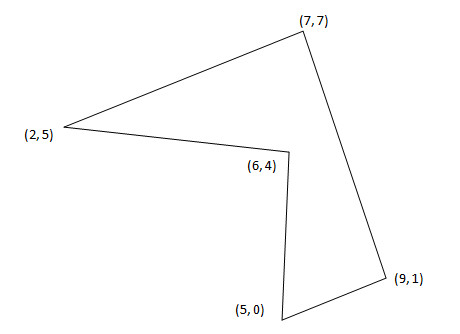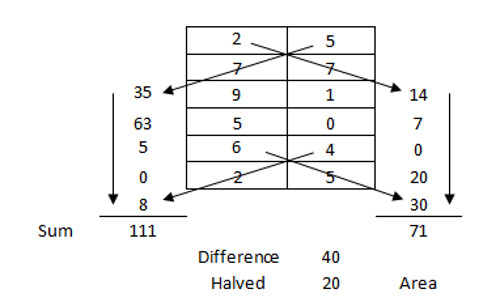
If you know the vertices of a polygon, here’s an interesting way to find its area:
- Arrange the vertices in a vertical list, repeating the first vertex at the end (see below).
- Multiply diagonally downward both ways as shown.
- Add the products on each side.
- Find the difference of these sums.
- Halve that difference to get the area.

This works for any polygon, no matter the number of points, so long as it doesn’t intersect itself. It’s a slight restatement of the shoelace formula.
(Thanks, Derek, Dan, and Kyle.)
